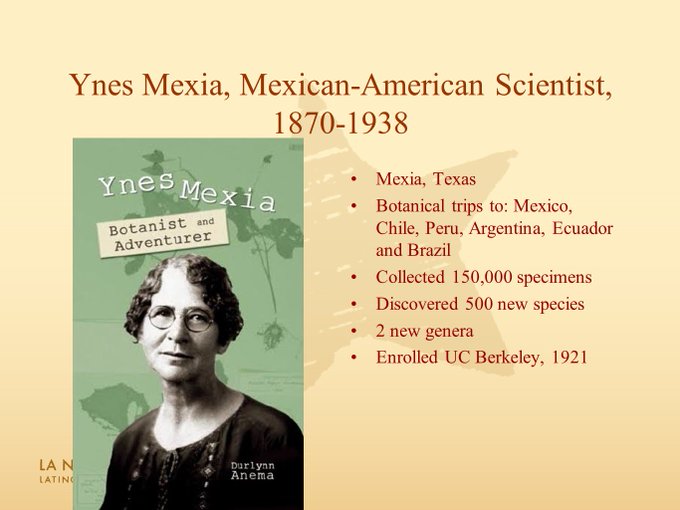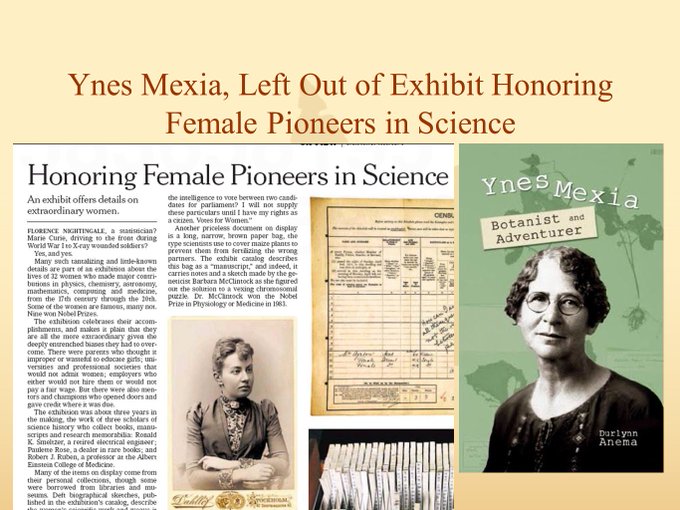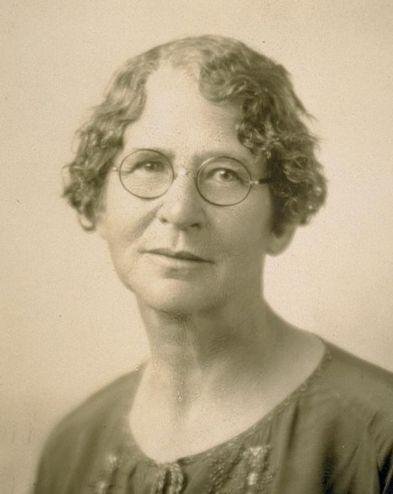
Google Ynés Mexía
Ynés Mexía was a Mexican-American botanist and explorer who studied everything from a remote volcano to poisonous berries. She is the subject of a Google Doodle in honor of Hispanic Heritage Month. She’s credited with discovering 150,000 botanical specimens.
Mexía’s journeys were done “all for the sake of botanical discoveries,” Google wrote with the Google Doodle. “We started on the long journey back,” Mexía wrote after collecting wax palm samples, “very tired, very hot, very dirty, but very happy.”
“The life of Ynes Mexia is a prime example of how it’s never too late to find one’s calling,” wrote Latino Natural History. Her full name was Ynes Enriquetta Julietta Mexia. Mexía didn’t even start collecting specimens until she was in her 50s, and she didn’t live very long after that point. Yet, she managed to make an enduring contribution to the field of botany and to the world.
SHPE National called her “arguably the most accomplished plant collector of her time.” According to Encyclopedia Brittanica, her “discoveries helped to clarify and complete botanical records.”
She was “one of the early 20th century’s great botanical collectors,” Outside reports.
Here’s what you need to know:
1. Mexía Traveled First to Mexico Looking for ‘Rare Botanical Species’
Google timed the Google Doodle to coincide with the anniversary of Mexía’s “first plant collection trip.”
She had gone to Sinaloa, Mexico, Google wrote, in 1925, accompanied by Stanford University colleagues “in search of rare botanical species.” She was 55 and had joined a local Sierra Club. It was a tough journey in which she fractured her hand and ribs, but she brought back 500 specimens, 50 that were newly discovered, according to Google.
According to Latino Natural History, the collection trip involved botanist Roxanna Stinchfield Ferris of Stanford University. One of the species they collected was named for Mexia: Mimosa mexiae, the site reported.
The Natural History Museum’s biography of Mexia says she “decided she could accomplish more on her own,” once she arrived in Mexico. She left the group behind and spent two years collecting more than 1,500 specimens, “which she sent to the herbarium at Berkeley. Her success in Mexico assured her reputation,” the bio explained.
2. Mexía Was the Daughter of a Mexican Diplomat
Mexía was born in Washington D.C. in 1870 “as a daughter to a Mexican diplomat,” Google wrote.
According to Latino Natural History, her mother was American, and she moved to Texas with her when her parents separated. She was bi-cultural. Eventually, though, she also joined her father in Mexico City. She was married twice. Her early life, NYBG reported, was “somewhat tumultuous.”
Mexía had a lot of personal travails, but they eventually led her to California and a new career. One of her husbands died, and the second marriage ended up in divorce, according to Latino Natural History, and she moved to California “after a nervous breakdown.” She became an United States citizen in 1924.
She was a social worker in California before turning to botany.
According to Outside, Mexia persevered despite discrimination due to her gender, ethnicity and age.
3. Ynés Mexía Started Studying Botany Later in Life
It wasn’t until Mexía was in California and in her 50s that she decided to turn her love of nature into a calling and started studying botany. She was 51, Google wrote.
“After her inaugural plant discovery trip in 1925, Mexía continued journeying to uncover more species throughout Mexico, many of which were then named after her,” according to Google, including Zexmenia mexiae, now called as Lasianthaea macrocephala.
Latino Natural History noted that Mexia was a “a special student at the University of California – Berkeley” when she first grew fascinated by botany.
“… I have a job, [where] I produce something real and lasting,” she wrote of studying botany, according to Latino Natural History.
4. Mexía’s Work Lives on & She Made an Important Influence on the Botany World
Mexía never completed a college degree, yet she became an influential figure in her chosen field.
Mexía became “one of the most celebrated collectors of botanical specimens in history,” according to Google, who gathered about 150,000 specimens.
“More than 90 years after she started, scientists are still studying Mexía’s samples, which are now housed in a number of major institutions around the world,” wrote Google.
According to Early Women in Science, she collected specimens in the United States, Brazil, Peru and Mexico.
Outside described her journey to a volcano; she was based in Ecuador and traveled to find Chiles, “a remote volcano on the Colombian border,” because it was said that wax palm grew there, Outside reported. This was a tree that was said to tolerate the cold at high altitudes. She eventually found the tree. “I photographed the great spathe and flower-cluster, so heavy the two men could hardly lift it; made measurements and notes; and took portions of the great arching fronds,” she later wrote, according to Outside.
5. Mexía Died of Lung Cancer at a Fairly Young Age
Ynés Mexía died at age 67, having collected specimens for only about 13 years. She died of lung cancer, according to Latino Natural History.
Early Women in Science reported that Mexía worked with famous scientists such as Agnes Chase and Alice Eastwood. “She managed to collect thousands of plant specimens, including unknown types of plants,” the site reported.
According to the Natural History Museum biography, her adventures were many; for example, she collected plants in Alaska, traveled the Amazon River by canoe, and traveled to Mexico and South America several times. “In merely 13 years, she collected 8,800 numbers, or more than 145,000 specimens. They include two new genera, Mexianthus Robinson (Asteraceae) and Spulula Mains (Pucciniaceae),” the bio reads.
You can see her collection at Berkeley here.
READ NEXT: The Life & Death of Rocker Eddie Money.





